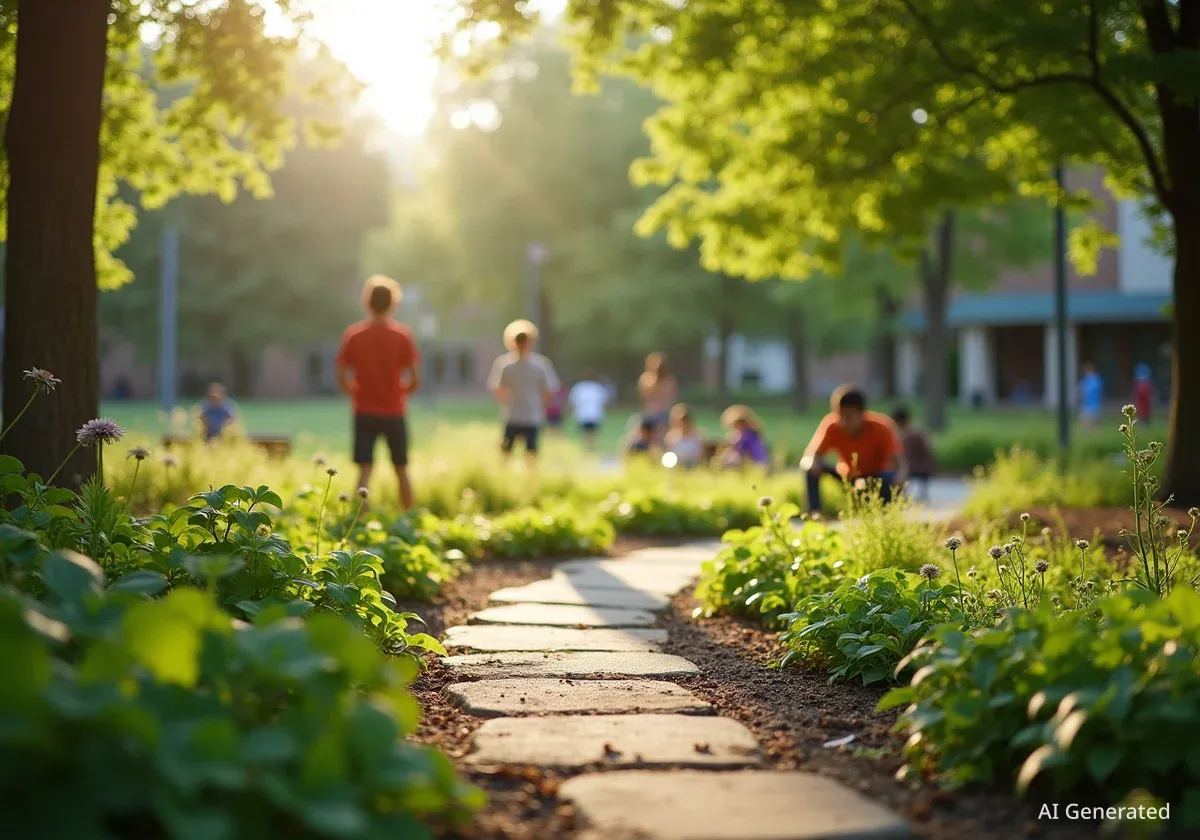Cincinnati Children's has officially opened a new, purpose-built green space at its College Hill campus, designed to support the mental and emotional well-being of young patients. The outdoor facility provides a therapeutic environment for youth receiving inpatient and residential mental health treatment.
Key Takeaways
- Cincinnati Children's unveiled a new therapeutic green space at its College Hill campus.
- The facility is designed for young patients in inpatient and residential mental health programs.
- Features include a sports court, enhanced playground, labyrinth, and horticulture area.
- The project received over $6.5 million in public funding from the American Rescue Plan Act.
A New Approach to Youth Mental Health Treatment
Cincinnati Children's introduced the redesigned outdoor area as a key component of its mental health services. The space was formally opened at a ceremony attended by hospital officials, Ohio Governor Mike DeWine, and Cincinnati Mayor Aftab Pureval.
The primary objective of the green space is to offer a safe and engaging outdoor environment that promotes physical activity, mindfulness, and emotional healing. It serves as a non-clinical setting where young patients can decompress and develop coping skills.
Addressing a Critical Need
The development of specialized facilities like this green space comes at a time of increasing focus on youth mental health. Healthcare providers are exploring innovative methods to supplement traditional therapy, with an emphasis on holistic well-being that includes physical and environmental factors.
Designed for Healing and Growth
Every feature within the green space was selected to support the therapeutic goals of the hospital's mental and behavioral health programs. The facility is not just a recreational area but an integrated part of the treatment process for young patients.
Key Features of the Outdoor Space
The area includes a variety of elements intended to cater to different needs and encourage positive engagement. These features are designed to foster everything from quiet reflection to active play.
- Horticulture Area: Allows patients to engage with nature by planting and caring for gardens.
- Enhanced Playground: A modern play structure designed for safe and active use.
- Splash Pad: Provides a space for sensory play and recreation during warmer months.
- Labyrinth: A walking path designed for mindfulness and quiet contemplation.
- Sports Field and Court: Offers opportunities for team sports and structured physical activity.
“Every detail was designed with the kids in mind—from the splash pad to the labyrinth,” said Dr. Laurel Leslie, Director of Cincinnati Children’s Mental and Behavioral Health Institute. “It’s not just a place to play—it’s a place to heal, grow, and feel joy. This project is something that will make a real difference in their lives.”
A Combination of Public and Private Funding
The construction of the therapeutic green space was made possible through a partnership of public funds and private donations. This collaborative funding model was essential for bringing the large-scale project to completion.
A significant portion of the financing came from federal sources. According to hospital officials, the project utilized $6,575,342 from the American Rescue Plan Act of 2021. These public funds were allocated for materials, labor, and the overall construction of the new facility.
American Rescue Plan Act Funding
The American Rescue Plan Act (ARPA) was a federal stimulus bill designed to aid public health and economic recovery. A portion of its funds was designated for state and local governments to invest in community health initiatives, including mental health services.
The Role of Outdoor Environments in Mental Health
The project at Cincinnati Children's aligns with a growing body of research highlighting the benefits of nature and outdoor activity on mental health. Experts suggest that spending time in green spaces can reduce stress, improve mood, and enhance cognitive function.
Benefits for Young Patients
For youth in residential treatment programs, access to such an environment can be particularly beneficial. It provides a necessary break from a clinical setting and encourages the development of healthy habits.
The various activities offered, from sports to gardening, are intended to help patients build confidence, improve social skills, and find positive outlets for their energy and emotions. The space is designed to be a sanctuary that supports their journey toward recovery.
Hospital leadership has emphasized that this green space represents a long-term investment in the community and the well-being of the children it serves. It is seen as a vital tool in providing comprehensive and compassionate mental healthcare.





